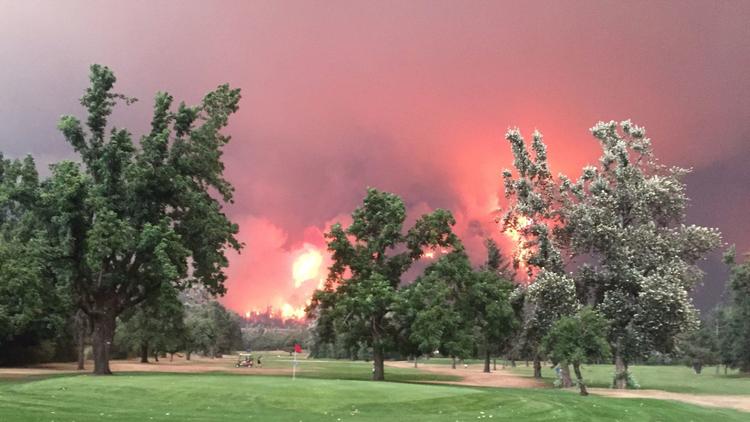
We reported on the below average wildfire activity at the mid-season point in July, which was not unexpected given the large amount of snowpack in the Pacific Northwest last winter. However, the second half of the season has been anything but average, as large-scale fires have consumed much of the Western US along with the US Forest Service’s (USFS) budget.
Over seven million acres of land have burned thus far in 2017, making it one of the most destructive fire seasons in recent history. Over 60 major fires are still burning in nine states, and there is another month of fire season to go. Fighting these fires has come at a tremendous cost for both federal and state agencies involved in fire suppression efforts; the USFS has spent more than $2 billion fighting fires this year for the first time ever, and states have spent hundreds of millions more.
Agriculture Secretary Sonny Perdue said the new record is evidence of a troubling pattern in spending priorities for the agency. “Forest Service spending on fire suppression in recent years has gone from 15 percent of the budget to 55 percent—or maybe even more—which means we have to keep borrowing from funds that are intended for forest management,” Perdue said. “We end up having to hoard all of the money that is intended for fire prevention, because we’re afraid we’re going to need it to actually fight fires.”
Every year, the USFS designates part of its budget to firefighting. However, because costs have been rising and fires have been growing in severity and scope, the emergency fire fund set aside is typically not enough to cover the costs of fighting these fires. This year, Congress appropriated $1.6 billion extra specifically for fire suppression, but it was not enough and the USFS has still had to shift funds from other programs to cover excess costs.
“It means we can’t do the prescribed burning, harvesting, or insect control to prevent leaving a fuel load in the forest for future fires to feed on,” Perdue said. “That’s wrong, and that’s no way to manage the Forest Service.”

The Eagle Creek fire on the Oregon side of the Columbia River Gorge. (Source: Hal Bernton / Seattle Times)
Seasonal Perspective
From California to Montana, thousands of individual and families have been forced to flee, with nearly 24,000 firefighters in the field across the region. However, as bad as things have gotten over the last six weeks, 2017 is not a record. More than 10 million acres burned in 2015, which was the worst fire season in decades. But much of that land was in remote areas of Alaska—far from populated areas in the lower 48.
Conversely, this year’s fires are wreaking havoc closer to major cities across the West. “As the West becomes more and more populated, we’re seeing more and more homes being built in these areas; the baby boomers retire and they’re building these homes all over, in natural parts of the landscape,” said Jessica Gardetto, a spokesperson for the federal Bureau of Land Management. “We’re going to see more summers like this.”
Western forests aren’t being actively thinned through land management and logging efforts, which has created a buildup of combustible material that feeds the megafires that are becoming more prevalent in the region. With the influx of new residents and new homes being built in areas that essentially function as tinder boxes for wildfires, the potential for costlier fires in the future—both in terms of human life and physical structures—compounds annually.
The USFS has already exceeded $2 billion dollars fighting fire this year and unless some of this land can be thinned and managed, next year will likely exceed this price tag. How much land and how many structures needs to burn before reasonable forest management practices can be implemented? How much money must the USFS and individual states spend on fire suppression efforts?
“We’ve allowed forests to develop that never developed naturally,” said Oregon State University in Corvallis professor of fire management John Bailey. Until sensible policy is enacted that allows for real-world forest management, residents of the PNW can likely expect more of the same next fire season.





